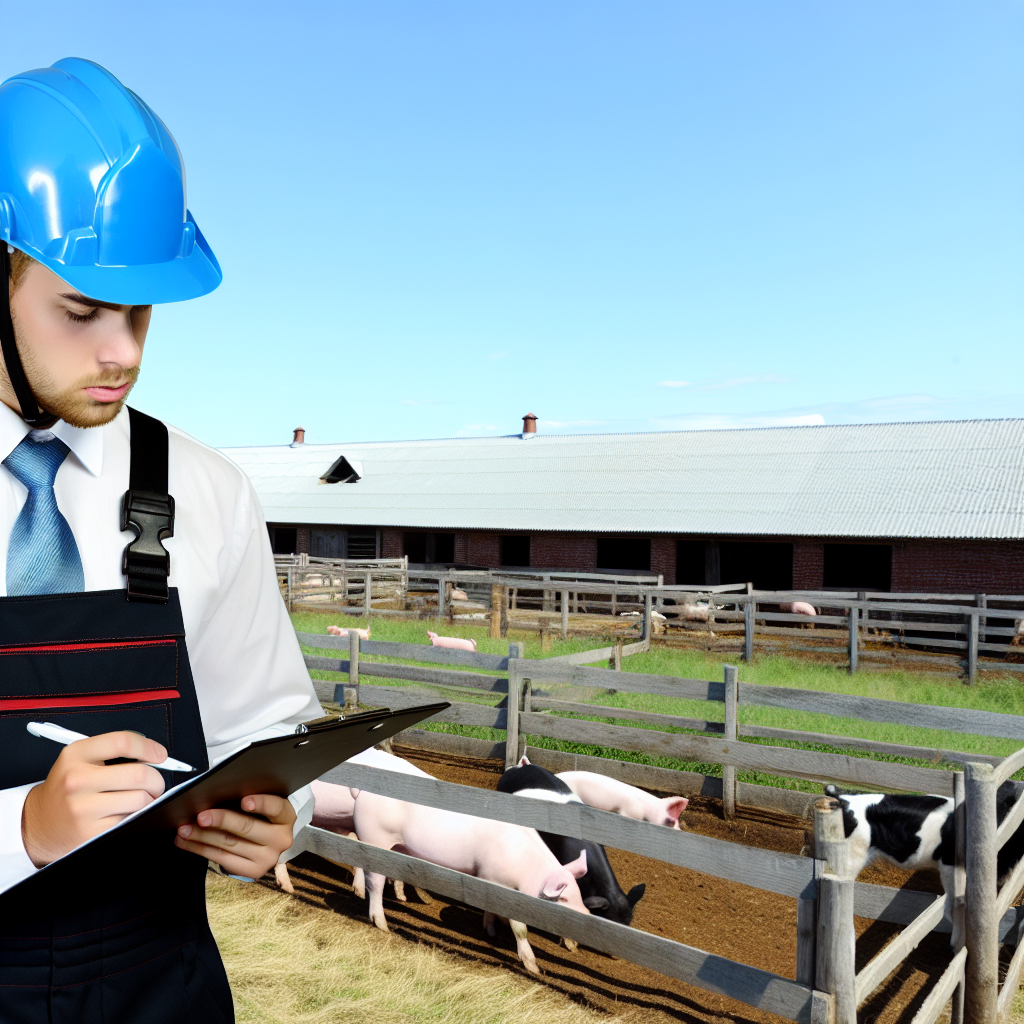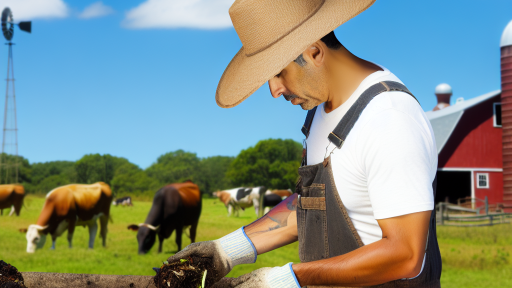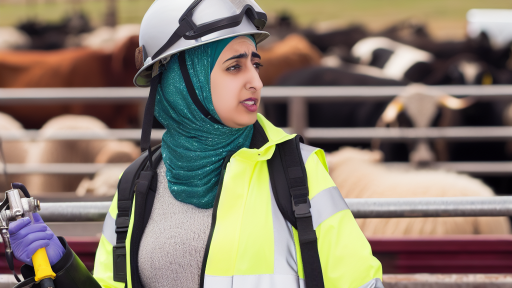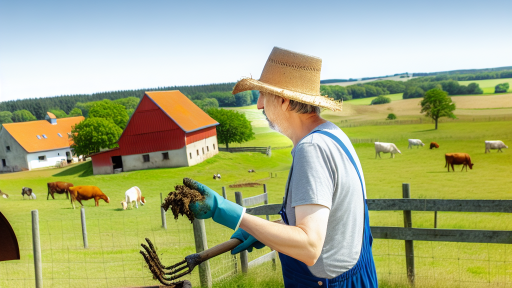Introduction to Safety Standards in Livestock Facilities
Safety standards in livestock facilities play a crucial role in animal welfare.
They also ensure the safety of workers and the public.
Establishing these standards requires attention to various factors.
Importance of Safety Standards
Implementing safety standards helps prevent accidents and injuries.
These standards promote a healthy working environment.
Furthermore, they help maintain the quality of livestock products.
Compliance with safety regulations can enhance a facility’s reputation.
Areas of Focus
Key areas of focus include structural safety and equipment use.
Employees must be trained in safe handling and animal care practices.
Regular inspections ensure that facilities remain compliant.
Documentation of safety protocols is vital for accountability.
Structural Safety
Facilities must have sturdy constructions to withstand various conditions.
Proper ventilation is necessary to maintain air quality.
Additionally, facilities should be designed to prevent animal escapes.
Equipment Safety
All machinery should undergo regular maintenance checks.
Transform Your Agribusiness
Unlock your farm's potential with expert advice tailored to your needs. Get actionable steps that drive real results.
Get StartedOperators must be trained to use equipment safely.
Furthermore, personal protective equipment is essential for all workers.
Compliance with Regulations
Compliance involves adhering to local and national safety standards.
Regular audits help facilities identify areas for improvement.
Engaging with local regulatory agencies can provide valuable guidance.
Ensuring compliance protects the welfare of livestock and workers alike.
Ongoing Training and Education
Continual training is crucial for maintaining safety standards.
Regular workshops help staff stay updated on best practices.
Investing in education promotes a culture of safety within the facility.
Benefits of Safety Standards
Adhering to safety standards results in fewer accidents.
It enhances productivity and boosts employee morale.
Ultimately, safety standards foster a healthier environment for livestock.
Importance of Safety Standards for Animal Welfare
Ensuring Animal Health
Safety standards play a crucial role in maintaining animal health.
They help prevent diseases that can spread within animals.
Moreover, healthy animals are more productive and economically beneficial.
Reducing Risk of Injury
Implementing safety standards reduces the risk of injury to livestock.
Proper housing and facility design prevent accidents and injuries.
Furthermore, equipment maintenance ensures safe environments for animals.
Promoting Best Practices
Safety standards encourage best practices in livestock management.
These practices enhance the overall welfare of the animals.
Consequently, farmers adopt methods that are both humane and effective.
Enhancing Public Trust
Adhering to safety standards helps build public trust in livestock production.
Consumers are more likely to support operations that prioritize animal welfare.
Additionally, transparency fosters confidence in the food supply system.
Showcase Your Farming Business
Publish your professional farming services profile on our blog for a one-time fee of $200 and reach a dedicated audience of farmers and agribusiness owners.
Publish Your ProfileCompliance with Regulations
Many regions require compliance with safety standards for livestock facilities.
Meeting these regulations avoids potential legal issues for farmers.
This compliance ultimately supports a sustainable farming system.
Key Regulatory Agencies and Their Roles
Federal Regulatory Agencies
Numerous federal agencies oversee livestock facility safety standards.
The USDA plays a major role in managing agricultural practices.
Also, the FDA regulates the safety of animal feed and drugs.
The EPA enforces environmental standards affecting livestock operations.
State Regulatory Agencies
Each state has its own regulatory agencies tailored to local needs.
These agencies implement state-specific livestock safety regulations.
For instance, California’s Department of Food and Agriculture focuses on compliance.
Additionally, state environmental agencies monitor pollution control measures.
Local Regulatory Bodies
Local governments enforce ordinances that affect livestock facilities directly.
County health departments ensure facilities comply with sanitation practices.
Furthermore, zoning boards regulate where livestock can be housed.
They also address issues related to noise and odor control.
Responsibilities of Regulatory Agencies
Regulatory agencies work to ensure animal welfare and public health.
They establish guidelines for housing and facility design.
Moreover, they monitor livestock health and disease management practices.
Regular inspections ensure compliance with safety regulations.
Collaboration Between Agencies
Agencies often collaborate to enhance livestock safety standards.
This coordination helps to streamline regulations across jurisdictions.
Workshops and conferences facilitate information sharing among agencies.
Effective communication improves response to health crises and emergencies.
Learn More: Temperature Control In Livestock Facilities
Common Safety Hazards in Livestock Facilities
Physical Hazards
Physical hazards pose significant risks in livestock facilities.
Equipment like tractors and handling tools can cause severe injuries.
Proper training reduces accidents related to machinery.
Additionally, uneven flooring increases slip and fall incidents.
Regular maintenance of facilities improves overall safety.
Chemical Hazards
Chemicals used in livestock management can be dangerous.
Pesticides and disinfectants require careful handling procedures.
Employees must wear appropriate personal protective equipment.
Clear labeling prevents accidental exposure or misuse.
Regular training ensures awareness of chemical hazards.
Animal-Related Hazards
Working with livestock presents unique safety challenges.
Handling aggressive animals can lead to serious injuries.
Proper animal handling techniques minimize the risk of harm.
Using the correct gear, like gloves and boots, enhances safety.
Understanding animal behavior is crucial for safe interactions.
Environmental Hazards
The environment in livestock facilities can also pose risks.
Showcase Your Farming Business
Publish your professional farming services profile on our blog for a one-time fee of $200 and reach a dedicated audience of farmers and agribusiness owners.
Publish Your ProfileExtreme temperatures can lead to heat stress or hypothermia.
Ventilation systems maintain safe air quality indoors.
Additionally, high levels of ammonia can harm respiratory health.
Implementing effective waste management practices reduces hazards.
Explore Further: Traits to Select for in Cattle Breeding
Best Practices for Implementing Safety Standards
Assessing Current Safety Protocols
Begin by evaluating existing safety protocols for livestock facilities.
Identify gaps in compliance with safety standards.
Involve staff in discussions to uncover potential hazards.
Document findings to create a baseline for improvements.
Developing Comprehensive Training Programs
Create training programs that emphasize safety best practices.
Ensure all employees receive regular safety training updates.
Utilize simulations to prepare staff for emergency situations.
Incorporate feedback sessions to enhance training effectiveness.
Implementing Safety Equipment and Tools
Equip facilities with necessary safety gear and tools.
Regularly inspect and maintain safety equipment to ensure functionality.
Use signage to remind staff of safety practices and hazards.
Provide personal protective equipment to all employees.
Establishing Emergency Protocols
Develop clear emergency procedures for livestock facilities.
Conduct regular drills to familiarize staff with emergency protocols.
Ensure all employees know how to respond to different emergencies.
Store emergency contact information in accessible locations.
Continuous Monitoring and Improvement
Regularly review safety standards and update them as needed.
Involve staff in safety audits to promote a culture of safety.
Encourage open communication about safety issues and suggestions.
Utilize incident reports to identify patterns and prevent future issues.
Discover More: Enhancing Goat Milk Production Naturally
Design Considerations for Safe Livestock Housing
Site Selection
Choose a location that avoids flood-prone areas.
Ensure proper drainage to prevent water accumulation.
Consider proximity to feed sources and markets.
Assess the wind direction to minimize dust and odors.
Structural Integrity
Use durable materials that withstand harsh weather conditions.
Ensure roofs can support heavy snow loads.
Incorporate windbreaks to protect livestock from strong winds.
Ventilation
Design for adequate airflow to regulate temperature.
Implement both natural and mechanical ventilation systems.
Consider humidity control to reduce respiratory issues.
Animal Welfare
Provide sufficient space for animals to move comfortably.
Incorporate features that allow natural behaviors.
Ensure access to clean water and nutritious feed.
Safety Features
Install non-slip flooring to prevent injuries.
Showcase Your Farming Business
Publish your professional farming services profile on our blog for a one-time fee of $200 and reach a dedicated audience of farmers and agribusiness owners.
Publish Your ProfileUtilize secure fencing to keep livestock safe from predators.
Ensure that all equipment is properly maintained and safe to use.
Waste Management
Plan for efficient waste disposal to maintain cleanliness.
Use facilities that reduce odor and environmental impact.
Implement a composting system for organic waste recycling.
Explore Further: Preventing Common Goat Diseases Naturally

Training and Education for Facility Staff on Safety Procedures
Importance of Safety Training
Safety training is essential for all facility staff members.
It enhances the safety culture within the livestock facility.
Moreover, it reduces the likelihood of accidents and injuries.
Regular training keeps staff updated on safety protocols.
Types of Safety Training
Various types of safety training exist for livestock facilities.
First, there is general safety training.
This covers basic safety practices relevant to all staff.
Additionally, specialized training focuses on handling livestock safely.
This training provides techniques to minimize risk during interactions.
Another key area is the use of equipment and machinery.
Training ensures staff understand proper operation and maintenance.
Frequency of Safety Training
Safety training should occur regularly to maintain effectiveness.
Annual refresher courses help reinforce knowledge among staff.
More frequent training may be necessary after incidents or updates.
Employers should also conduct training for new employees during orientation.
Assessment and Evaluation
Assessing training effectiveness is crucial for continuous improvement.
Regular evaluations can identify knowledge gaps among staff.
Feedback mechanisms allow employees to express their training needs.
Employers may use quizzes or practical demonstrations for assessments.
Incorporating Safety into Daily Practices
Encouraging a safety-first mindset should be a priority.
Staff members should routinely review safety procedures.
Moreover, daily briefings can help reinforce safety practices.
Other employees can share safety tips and experiences during these meetings.
Engagement and Teamwork
Engaging staff in safety discussions fosters teamwork.
Workshops can empower employees to take ownership of safety.
Such involvement leads to a more proactive safety culture.
Recognition programs can motivate staff to follow safety protocols.
Ongoing Development
Continuous development of training programs is essential.
Employers should stay informed about the latest safety standards.
Updating training content ensures relevance and accuracy.
Furthermore, collaboration with industry experts can enhance training quality.
Emergency Preparedness and Response Plans in Livestock Facilities
Importance of Emergency Preparedness
Emergency preparedness is crucial in livestock facilities.
Proper planning minimizes risks during unexpected situations.
It also ensures the safety of animals and workers.
Showcase Your Farming Business
Publish your professional farming services profile on our blog for a one-time fee of $200 and reach a dedicated audience of farmers and agribusiness owners.
Publish Your ProfilePreparedness can save lives and protect property.
Understanding Potential Emergencies
Various emergencies may impact livestock operations.
Fires can threaten facilities and animals.
Severe weather events, like storms or floods, can disrupt operations.
Biological threats, such as disease outbreaks, may also occur.
Creating an Emergency Response Plan
Establish a clear emergency response plan for your facility.
The plan should outline protocols for various scenarios.
Ensure everyone understands their roles during an emergency.
Communicate the plan regularly through training sessions.
Components of an Effective Plan
- Identification of potential hazards.
- Evacuation procedures for animals and staff.
- Communication strategies with emergency services.
- First aid protocols for injuries and animal care.
Training and Drills
Regular training improves preparedness and response times.
Conduct emergency drills to reinforce knowledge and skills.
Evaluate and adjust plans based on drill outcomes.
Encourage feedback from participants for improvement.
Communication Systems
Establish reliable communication systems for emergencies.
A robust system ensures swift notifications and actions.
Consider using both digital and manual communication methods.
Regularly test these systems for effectiveness.
Post-Emergency Evaluation
After an emergency, conduct a thorough evaluation.
Assess the effectiveness of the response plan.
Identify strengths and weaknesses to enhance future preparedness.
Incorporate lessons learned into training and planning.
Case Studies: Successful Implementation of Safety Standards
Overview of Safety Standards
Safety standards provide essential guidelines for livestock facilities.
These standards protect both workers and animals.
Incorporating these measures improves overall operational safety.
Case Study: Green Pastures Farm
Green Pastures Farm implemented new safety protocols in 2021.
First, they conducted a comprehensive risk assessment.
This evaluation identified potential hazards on the farm.
Next, they invested in upgraded fencing and equipment.
This significantly reduced accidents involving livestock.
Workers reported feeling safer in their environment.
The farm’s productivity increased as a result.
Moreover, Green Pastures gained recognition for its safety practices.
Case Study: Blue Sky Beef Ranch
Blue Sky Beef Ranch adopted enhanced training programs earlier this year.
The program focuses on safe handling techniques for livestock.
Employees now undergo regular safety drills.
This proactive approach minimizes injury risks.
Moreover, it fosters a culture of safety within the team.
The ranch owner, Maria Thompson, has praised the initiative.
She noted improved morale among staff following the training.
Key Outcomes
Overall, these case studies demonstrate the impact of safety standards.
Showcase Your Farming Business
Publish your professional farming services profile on our blog for a one-time fee of $200 and reach a dedicated audience of farmers and agribusiness owners.
Publish Your ProfileThey illustrate how effective practices lead to safer environments.
Additionally, facilities see productivity improvements as well.
Implementing these standards not only protects individuals but also enhances business operations.
Additional Resources
Guide for the Care and Use of Laboratory Animals, 8th edition …




